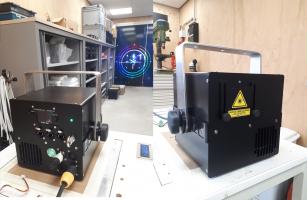

Originally Posted by
planters

Edison, we think alike! My target at this point is to test the 9mm 445nm diodes in the same way as the P73. Then to determine if this just gets better @ -193C or is a FAIL. Whichever way this goes, either -80C or -193C; build a better version of the test chamber (although the general lay out is pretty elegant ) and mount 4 of each diode type in a common cold compartment projecting out through 1 or 2 larger windows. All the beam manipulation, including knife edging, is done outside and @ RT. Both LN2 and dry ice are inexpensive, widely available and who could resist the allure of a cryogenic laser releasing wisps of smoke during a show. It is like a built in fogger.
suppose you're thinkin' about a plate o' shrimp. Suddenly someone'll say, like, plate, or shrimp, or plate o' shrimp out of the blue, no explanation. No point in lookin' for one, either. It's all part of a cosmic unconciousness.



 Reply With Quote
Reply With Quote


 Vidal Wolf
Vidal Wolf

